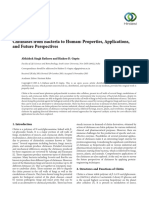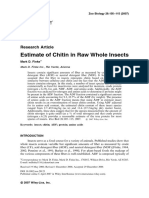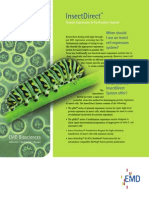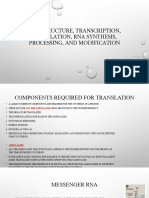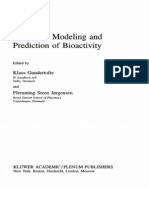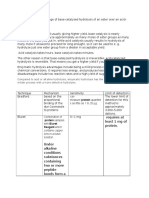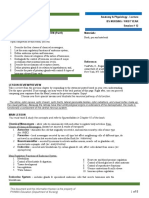FIRST.
But for this practical, we will focus in two proteins made using homology modelling process.
The Ligand for each insecticide must be provide to the candidate. In other hand, it’s also
important to know that each candidate must have three specific software installed on his/her
computer:
SECOND
The first purpose of this laboratory session is firstly to perform molecular docking between
two chitinase protein of insects and a specific benzoylurea insecticide. Secondly, it’s aim is
also to visualize, carry out and analyze different Ligand-Protein interactions in a molecular
complex.
THIRTH
The proteins of interest for today are cockroach Chitinase receptor from Periplaneta
americana (PACRO) and the house fly Chitinase receptor from Musca domestica (MDCRO)
which are specific enzyme involving in regulation of Chitin production into some insect cells.
Practical Work for CHEM4148
Part II: Molecular Mechanics
Title: Introduction to Molecular Docking on Chimera with AutoDock Vina and molecular
complex interactions Visualization using Biovia Discovery Studio
Practical Work for CHEM4148
Introduction to Molecular Docking on Chimera with AutoDock Vina and molecular
complex interactions Visualization using Biovia Discovery Studio
I- Computational Chemistry
Computational chemistry generally refers as studies of biological systems using technics
based on molecular mechanics (MM), molecular dynamics (MD), Brownian Dynamics (BD),
Monte Carlos (MC) among others. Using MD, real life systems can be modelled on a
computer. This laboratory exercise will focus on molecular docking on the USCF Chimera
software with AutoDock Vina program between two (02) chitinase proteins of insects
(cockroach and fly) and one specific benzoylurea active substance. In order to perform a
molecular docking study, it’s important to have good ligand and a protein model capable of
being used to perform the desired studies.
A large number of protein X-ray structures can be obtained from the Protein Data Bank
(PDB). Most protein structures (enzymes) in the protein data bank have cofactor (coenzyme)
�in the binding mode of the enzyme. But for this practical, we will focus in two proteins made
using homology modelling process. The Ligand for each insecticide must be provide to the
candidate. In other hand, it’s also important to know that each candidate must have three
specific software installed on his/her computer:
UCSF Chimera;
AutoDock Vina;
Biovia Discovery Studio.
II- Purpose of the Exercise
The first purpose of this laboratory session is firstly to perform molecular docking between
two chitinase protein of insects and a specific benzoylurea insecticide. Secondly, it’s aim is
also to visualize, carry out and analyze different Ligand-Protein interactions in a molecular
complex. Once the different Ligand-Protein interactions are visualized and analyses, they can
give an idea of the ability of an active substance to mimic the regular activity of a protein due
to its position in the active site of the target protein. The proteins of interest for today are
cockroach Chitinase receptor from Periplaneta americana (PACRO) and the house fly
Chitinase receptor from Musca domestica (MDCRO) which are specific enzyme involving in
regulation of Chitin production into some insect cells.
In fact, Chitin is a biopolymer (linear polymer composed of N-acetyl-glucosamines) that is
widely used in nature and is produced by insects in particular. It is the major component of the
cuticle that makes up the exoskeleton in insects. The synthesis of chitin is a crucial process for
the growth and development of insect because it is the main constituent of the cuticle that
insect regularly replaces through moulting phenomena or process. Thus, the inhibition of
chitin synthesis then induces disturbances in the cuticle formation process which lead to the
aborted moulting. To illustrate the impact of this disruption in insect growth, we have the fact
that without chitin, larval fleas or nymphs will never again develop a hard outer shell
(exoskeleton) and so, with their internal organs exposed to the air, insects die of dehydration
shortly after hatching or moulting (losing its old, smaller shell). This is why inhibitors of
chitin synthesis have been developed as insecticides such as benzoylureas. In this exercise,
nine types of benzoylureas will be explored.








